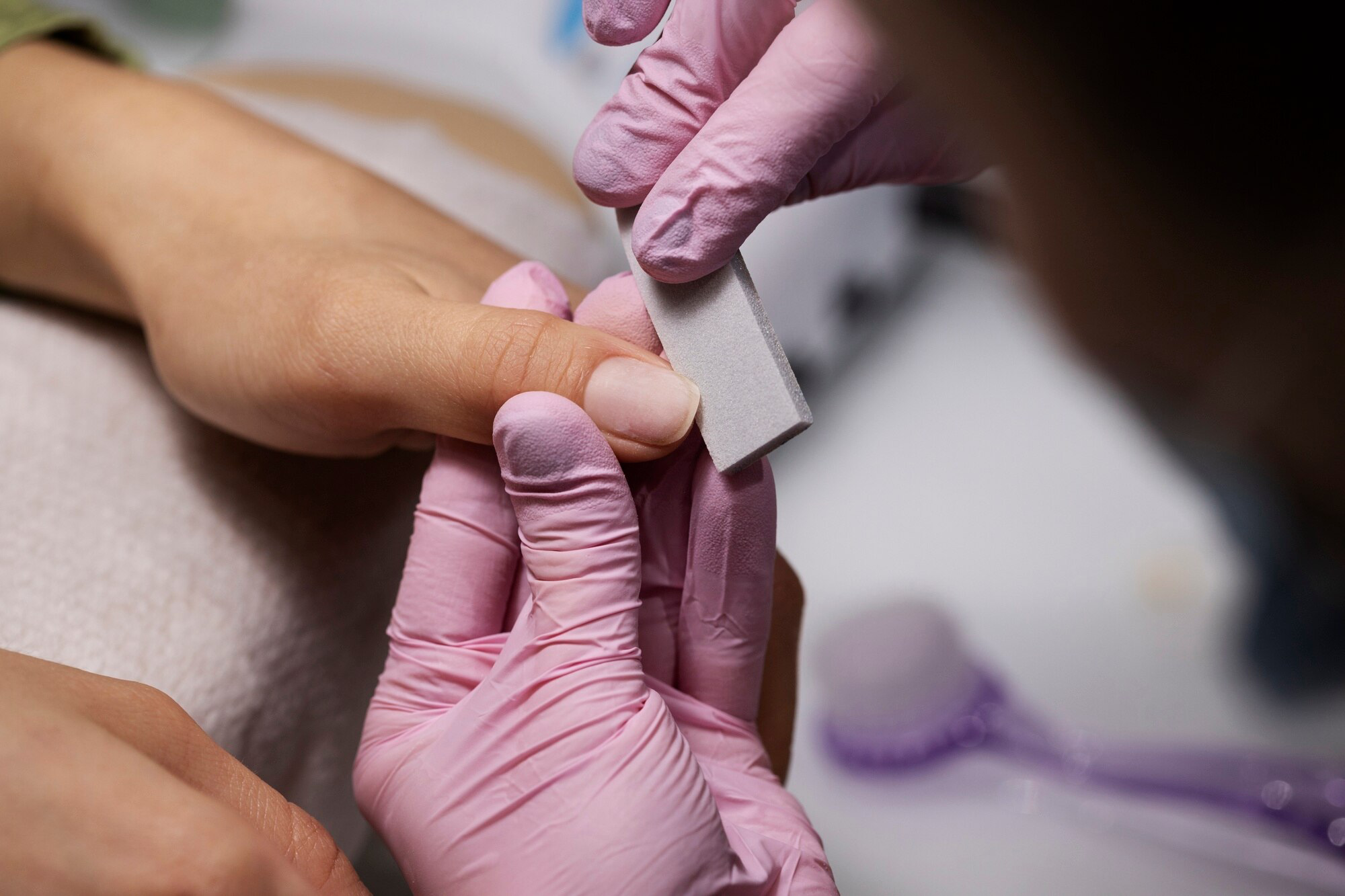Learning
The Heart of the Matter: Cardiac Surgery in Singapore
The article examines Singapore’s esteemed cardiac surgery sector, known for its advanced healthcare, skilled surgeons, and state-of-the-art medical facilities. It covers various cardiac procedures, Singapore’s global healthcare recognition, and factors affecting surgery costs, such as surgery type and hospital choice. Also highlighting Singapore’s patient-centric approach, multilingual environment, and commitment to international healthcare standards.
Essential Aspects of Cardiac Surgery in Singapore
Introduction
Cardiovascular disease is a leading cause of mortality worldwide, and when conservative treatments are not sufficient, cardiac surgery becomes a crucial option. Singapore, renowned for its advanced healthcare system, offers top-notch cardiac surgery services. In this article, we will delve into the cardiac surgery in Singapore. By the end of this article, you will have a clear understanding of why patients choose Singapore for cardiac surgery and the factors influencing the cost.
Singapore, a vibrant city-state known for its technological advancement and robust healthcare system, has emerged as a beacon in the realm of cardiac surgical care. Combining state-of-the-art medical facilities, a pool of world-class cardiac surgeons, and a commitment to innovative care, Singapore stands as a premier destination for those seeking advanced cardiac treatments. Its blend of medical excellence and patient-centric services makes Singapore an attractive choice for both regional and international patients.
The Significance of Cardiac Surgery
Cardiac surgery is a specialized field that deals with surgical interventions to treat heart-related conditions. These surgeries are essential in cases where other treatments are ineffective or insufficient. The primary goals of cardiac surgery include:
- Correcting Structural Abnormalities: Repairing or replacing heart valves, closing congenital defects, and treating other structural abnormalities.
- Coronary Artery Bypass Grafting (CABG): Re-routing blood flow around blocked arteries to restore blood supply to the heart muscle.
- Heart Transplant: Replacing a damaged or failing heart with a healthy donor heart.
- Aortic Aneurysm Repair: Treating a weakened or bulging aortic artery to prevent rupture.
- Arrhythmia Surgery: Correcting irregular heart rhythms, often with the implantation of pacemakers or defibrillators.
The Evolution of Cardiac Surgery in Singapore
Singapore’s healthcare system is globally recognized for its high standards, sophisticated technology, and pioneering medical research. In cardiac surgery, the nation offers an integration of experienced surgeons, cutting-edge treatments, and a holistic approach to patient care, leading to outstanding outcomes in various heart-related procedures.
Why Cardiac Surgery in Singapore?
Patients from around the world choose Singapore for cardiac surgery for several compelling reasons:
- World-Class Expertise: Singapore is home to highly skilled cardiac surgeons and medical teams who have extensive experience in performing complex cardiac surgeries.
- Advanced Technology: Singapore’s healthcare institutions are equipped with state-of-the-art technology, ensuring accurate diagnoses and precise surgical procedures.
- International Recognition: Singapore’s healthcare system is internationally recognized for its excellence, making it a trusted choice for patients seeking high-quality care.
- Internationally Trained Surgeons: Singapore’s cardiac surgeons are highly qualified, with many having trained in leading medical institutions around the world.
- Cutting-Edge Medical Infrastructure: Hospitals in Singapore are equipped with the latest technology, ensuring patients have access to the most advanced cardiac care.
- Holistic Patient Care: The focus on patient-centric care ensures personalized treatment plans, from initial consultation through to post-operative recovery and rehabilitation.
- Global Healthcare Hub: Singapore’s reputation as a medical hub attracts the best medical talents and the latest technologies, continually enhancing its cardiac care standards.
For locating an excellent medical facility providing top-tier healthcare, services like Doctor.Global are available. Platforms like this enable users to discover accredited hospitals of the highest quality not only in Singapore but across the globe. - Safety and Cleanliness: The city-state is celebrated for its safety, cleanliness, and strict adherence to hygiene standards, contributing to a safe healthcare environment.
- Multilingual Environment: Singapore’s multilingual society, with English as one of its official languages, ensures clear communication for international patients seeking cardiac surgery.
Cost of Cardiac Surgery in Singapore
The cost of cardiac surgery in Singapore varies depending on several factors:
- Type of Surgery: Different cardiac surgeries have varying levels of complexity and, therefore, different costs. For example, coronary artery bypass grafting (CABG) may have a different price range compared to valve replacement.
- Hospital Choice: The choice of healthcare facility plays a significant role in determining the cost. Singapore offers a range of hospitals and medical centers with different pricing structures.
- Surgeon’s Fees: Surgeon fees can vary based on the surgeon’s reputation, experience, and expertise.
- Medical Insurance: The extent of medical insurance coverage can greatly impact the out-of-pocket expenses for patients.
- Preoperative and Postoperative Care: Costs may also include preoperative evaluations, postoperative care, and rehabilitation, depending on the patient’s condition and surgical procedure.
Key Indications for Cardiac Surgery
Cardiac surgery is recommended for various conditions, including:
- Coronary Artery Disease (CAD): When blood flow to the heart muscle is severely restricted due to blockages in the coronary arteries, CABG may be necessary to restore blood flow.
- Valvular Heart Disease: Surgical repair or replacement of damaged heart valves, such as the aortic or mitral valve, can prevent heart failure.
- Congenital Heart Defects: Infants and children born with structural heart abnormalities often require surgery to correct these defects.
- Aortic Aneurysm: Surgery is essential to repair or replace an enlarged or weakened aorta to prevent life-threatening rupture.
- Heart Failure: In cases of severe heart failure, heart transplantation may be the only option to extend a patient’s life.
- Arrhythmias: Certain cardiac arrhythmias, such as atrial fibrillation, may require surgical interventions like ablation to restore a normal heart rhythm.
Navigating Cardiac Surgery in Singapore as an International Patient
Navigating a foreign healthcare system can be daunting. However, Singapore’s healthcare institutions are well-versed in handling international patients, providing services like language translation, assistance with accommodation, and care coordination.
Quality and International Accreditation
Singapore’s healthcare facilities offering cardiac surgery often hold international accreditations, such as from JCI, affirming their commitment to global healthcare standards and patient safety.
Legal and Ethical Standards in Singaporean Healthcare
The Singapore healthcare system operates under strict legal and ethical standards, ensuring transparency, patient rights, and the highest level of medical care.
Conclusion
Cardiac surgery in Singapore represents a beacon of hope for individuals facing serious heart-related conditions. Whether it’s coronary artery bypass grafting (CABG), valve replacement, congenital heart defect correction, or other complex procedures, Singapore offers world-class expertise and cutting-edge technology.
The decision to undergo cardiac surgery is often driven by the need for life-saving treatment or significant improvement in a patient’s quality of life. While the cost of cardiac surgery can vary, the assurance of receiving top-quality care and access to internationally renowned cardiac surgeons make Singapore a trusted choice for patients seeking cardiac surgery.
SEE ALSO: WHO Confirms 1st Sexual Transmission Of Mpox In Congo Amidst Largest-Ever Outbreak

Learning
First-Time Buyer’s Guide to the UK Property Market

Entering the UK property market as a first-time buyer can feel both exciting and daunting. The process is filled with potential pitfalls and complex decisions, but with the right guidance, it can be navigated smoothly. The estate agents in Yorkshire demystify the journey from the initial decision to buy a home to the moment you step over the threshold of your new property.
Understanding Your Financial Position
The first and perhaps most crucial step in the home-buying process is understanding your financial situation. This includes assessing your savings, income, and current debts. Here’s how you can prepare:
1. Deposit: Generally, you’ll need at least 5% of the property price as a deposit, though aiming for 10% or more can provide better mortgage rates.
2. Income and Expenses: Use a budget planner to assess your monthly income against your expenses. This will help you understand how much you can afford in monthly mortgage repayments.
3. Credit Score: Lenders will evaluate your credit score to determine your mortgage eligibility. So it’s important to have a good credit score, and you should work on it if required.
4. Mortgage Options: Speak to a mortgage advisor to understand different types of mortgages, such as fixed-rate, variable-rate, and help-to-buy schemes.
Getting a Mortgage Agreement in Principle
A Mortgage Agreement in Principle (AIP) is a statement from a lender indicating how much they’ll likely lend you. You will be a more attractive buyer with an AIP as it shows sellers you’re serious and financially prepared.
Deciding What You Want
Before you start viewing properties, it’s essential to know what you’re looking for. Consider the following factors:
1. Location: Proximity to work, schools, public transport, and amenities are key. Research neighbourhoods to find the best fit for your lifestyle.
2. Property Type: Decide whether you want a flat, terraced house, semi-detached, or detached property. Each has its pros and cons.
3. Must-Haves: Make a list of non-negotiables, such as the number of bedrooms, garden size, and parking facilities.
4. Future Proofing: Consider your future needs. Are you planning to start a family? Do you need space for a home office?
Starting the Property Search
With a clear idea of what you’re looking for, you can begin your property search. Here are some tips:
1. Use Online Portals: Websites like Rightmove, Zoopla, and OnTheMarket are excellent starting points. Set up alerts to get notified of new listings that meet your criteria.
2. Visit Estate Agents: Register with local estate agents who can provide insights into the market and inform you of new properties before they’re listed online.
3. Attend Viewings: Don’t rush this part. Visit several properties to get a feel for what’s available in your price range.
Making an Offer
Once you find a property you love, it’s time to make an offer. Here’s how to approach it:
1. Research: Check the selling prices of similar properties in the area to gauge a fair offer.
2. Negotiate: Don’t be afraid to negotiate. The starting point is most usually the asking price.
3. Conditions: You might include conditions in your offer, such as the inclusion of certain fixtures or a specific moving date.
The Legal Process
If your offer is accepted, the legal process begins. You’ll need a solicitor or licensed conveyancer to handle the legalities. Here’s what to expect:
1. Conveyancing: This is the legal transfer of property ownership. Your solicitor will handle this, including conducting searches, dealing with the Land Registry, and transferring the funds.
2. Surveys and Inspections: Arrange for a property survey to check for structural issues. There are different types of surveys, from basic condition reports to full structural surveys.
3. Mortgage Finalisation: Once the survey is complete and satisfactory, your mortgage can be finalised.
4. Exchange of Contracts: This is when the sale becomes legally binding. You’ll pay your deposit at this stage.
5. Completion: On the agreed completion date, the remaining money is transferred, and you receive the keys to your new home.
Moving In
Moving day can be hectic, but planning can ease the stress:
1. Hire a Removal Company: Book a reliable removal company well in advance. Discover the best deals by getting quotes from multiple companies.
2. Pack Strategically: Label your boxes by room and keep essential items accessible.
3. Notify Utilities and Change Address: Inform your utility providers of your move date and update your address with banks, the DVLA, and other important institutions.
Settling In
Get settled. Introduce yourself to the neighbours, familiarise yourself with the local area, and really start to make the place your own.
Here are a few final tips:
1. Safety Checks: Make sure that your smoke alarms and carbon monoxide detectors are working, and make sure that you know where the gas and electricity meters are located.
2. Maintenance Plan: Keep a record of the smooth functioning of your new home with a maintenance schedule, complete with regular checks and seasonal tasks.
3. Personal Touches: Add personal touches to make the space feel like home. This can be from putting up family photos or redoing the decoration in your rooms.
Conclusion
Buying your very first home in the UK is most definitely a milestone, difficult and full of challenges but rewarding in the end. Such a philosophy guides you in understanding finances and knowing what you want to achieve from detailed research, and seeking professional advice that confidently helps you navigate the property market. Yes, the journey may have its hurdles, but in the end—owning your own home—the reward will be worth the effort. Welcome to your new chapter!
SEE ALSO: Conquer the Chaos: Hacks to Clean Your Home in Half the Time
Learning
5 Health Benefits of Regular Pedicures

There’s nothing quite like a pedicure to keep your feet looking and feeling their best, but did you know that pedicures do more than simply enhance the appearance of your feet? Many people don’t realize that regular pedicures can come with a wide range of health benefits that can promote the well-being of your feet, so here are some ways that your routine pedicure keeps both your toenails and feet in the best condition possible!
Smoother Skin
One of the biggest misconceptions about pedicures is that they only cater to and look after your toenails. While you’ll definitely be leaving each session with a fresh coat of nail polish, your pedicure can also do wonders for the health of your skin. Aside from trimming and shaping your nails and cuticles, you’ll notice that your nail technician also dedicates a few steps to the skin of your feet.
After inspecting your feet and looking for any issues or imperfections that may need to be addressed, your technician will work on an exfoliating scrub to remove any dead skin cells. This step may also be aided by a foot file, which can be used to buff away any calluses and other problem areas manually.
Softer Skin
After your nail technician addresses all the problem areas of your feet and removes any unwanted dead skin cells, he or she will often massage in a moisturizing product, such as lotion, cream, or butter, to ensure that your skin is properly moisturized. These products contain skin-loving ingredients that will ensure that your feet have everything they need to look and feel their best so that you can walk out of your pedicure with a renewed sense of confidence.
Healthier Nails
After your pedicure session, your nails will not only look better due to the fresh coat of nail polish, but they’ll also be healthier and stronger. This is because your nail technician takes their time to ensure that your nails are properly looked after through steps that include deep cleaning, nail trimming, nail filing, and cuticle care. All of these things work together to prevent issues like ingrown nails from occurring, all the while improving the appearance of your nails.
Increased Blood Circulation
While the specific steps included in your pedicure will depend on the beauty salon, most pedicures will have a massage step somewhere in the mix. One of the often overlooked benefits of these massages is the increased blood circulation, which can deliver more nutrients and oxygen to your feet and nails, promoting their health and appearance. Aside from that, better blood flow means reduced tension and soreness, as well as better distributed heat throughout your body.
Reduced Infections
A significant amount of dirt and bacteria can build up on your feet without you even realizing it, but pedicures can be a great way to prevent these from happening in the first place. The exfoliation step of a pedicure removes dead skin cells as well as all the debris that may have accumulated underneath, and the deep cleaning of your toenails and cuticles also gets rid of any impurities that may have slipped beneath them, which can stop infections from happening.
These are some of the many health benefits that you can look forward to at your next pedicure appointment. However, it’s worth noting that you need to book regular sessions to truly reap all the rewards. This can be difficult, especially when you don’t feel like driving to your nearest nail salon after a long day, but the good news is that you can enjoy the salon experience in the comfort of your own home with a home pedicure service.
Learning
Commercial Boiler Installation Services London

For businesses in the bustling city of London, having a reliable heating system is crucial. Whether you’re opening a new office, expanding your current premises, or simply upgrading an outdated system, commercial boiler installation services for businesses in London are essential to ensure your operations run smoothly and efficiently. Proper installation and maintenance of commercial boilers can make a significant difference in energy efficiency, cost savings, and the overall comfort of your workspace.
The Importance of Professional Installation
When it comes to installing a commercial boiler, professional expertise is paramount. Here’s why:
- Efficiency and Performance: Professional installation ensures that your boiler operates at peak efficiency, reducing energy consumption and lowering utility bills. A well-installed boiler can effectively meet the heating demands of your business without unnecessary energy waste.
- Safety: Commercial boilers are complex systems that require precise installation to operate safely. Professional installers adhere to stringent safety standards and regulations, minimizing the risk of accidents and ensuring the safety of your employees and premises.
- Compliance with Regulations: Commercial properties are subject to various building codes and regulations. Professional installers are well-versed in these requirements and ensure that your boiler system complies with all local laws and standards.
- Longevity and Reliability: Proper installation is critical to the longevity and reliability of your boiler. A professional installation can prevent common issues such as leaks, pressure problems, and system failures, ensuring that your boiler runs smoothly for years to come.
Key Considerations for Commercial Boiler Installation
When planning for a commercial boiler installation, several factors need to be considered:
- Type of Boiler: The type of boiler you choose will depend on your business’s specific needs. Options include gas boilers, oil boilers, and electric boilers, each with its own set of advantages. Consulting with a professional can help you determine the best choice for your business.
- Sizing and Capacity: The boiler’s size and capacity must match the heating demands of your commercial space. An undersized boiler will struggle to meet your needs, while an oversized one will lead to inefficiencies and higher costs.
- Location: The placement of your boiler affects its efficiency and accessibility for maintenance. Professional installers can help you choose the optimal location for your boiler.
- Integration with Existing Systems: If you’re upgrading or replacing an existing boiler, it’s essential to ensure compatibility with your current heating system. Professional installers can seamlessly integrate the new boiler with your existing setup.
Choosing the Right Installation Service

Selecting the right installation service provider is crucial to the success of your boiler installation project. Consider the following when making your choice:
- Experience and Expertise: Look for a provider with a proven track record in commercial boiler installations. Experienced installers can handle the complexities of commercial systems and provide high-quality workmanship.
- Reputation: Check reviews and testimonials from previous clients to gauge the provider’s reliability and customer satisfaction.
- Comprehensive Services: Choose a provider that offers a full range of services, including installation, maintenance, and repair. This ensures that all your boiler needs are met by a single, trusted source.
In London, ROWLEN is a reputable name known for delivering top-notch commercial boiler installation services. Their team of experts is dedicated to providing efficient, safe, and compliant installations tailored to the unique needs of businesses.
Conclusion
Investing in professional commercial boiler installation services for businesses in London is essential for ensuring efficiency, safety, and long-term reliability. By choosing an experienced and reputable service provider like ROWLEN, you can rest assured that your heating system will be installed correctly and maintained to the highest standards. Proper installation not only enhances the performance of your boiler but also contributes to the overall comfort and productivity of your business environment.
SEE ALSO:
-

 News4 years ago
News4 years agoLet’s Know About Ultra High Net Worth Individual
-
Entertainment2 years ago
Mabelle Prior: The Voice of Hope, Resilience, and Diversity Inspiring Generations
-
News11 years ago
Enviromental Groups Tell Mekong Leaders Lao Dam Evaluation Process Flawed
-

 Health4 years ago
Health4 years agoHow Much Ivermectin Should You Take?
-

 Tech3 years ago
Tech3 years agoTop Forex Brokers of 2023: Reviews and Analysis for Successful Trading
-

 Lifestyles3 years ago
Lifestyles3 years agoAries Soulmate Signs
-

 Entertainment3 years ago
Entertainment3 years agoWhat Should I Do If Disney Plus Keeps Logging Me Out of TV?
-

 Health3 years ago
Health3 years agoCan I Buy Ivermectin Without A Prescription in the USA?